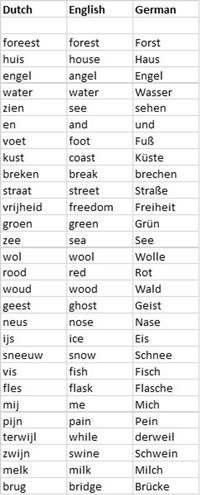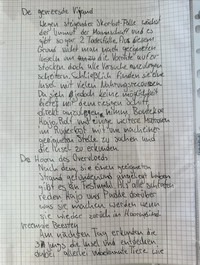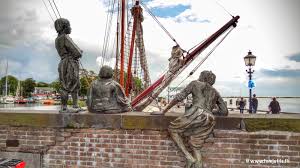Dutch
As a native speaker of Dutch, I have made it a priority to not only speak the language, but to also take up reading and writing Dutch as well as learn about Dutch culture and literature. This year, I have taken up reading Dutch books and learn more about etymology.
Etymology
My fascination with etymology began, when I started my journey to unravel the origins and evolution of words, particularly within the Dutch language as compared to the other germanic languages. As a native speaker of both Dutch and German, and fluent in English, I found myself uniquely positioned to explore the interconnectedness of these languages.
Below, you find one of the first lists of words that I created, which shows how many words have analogues German, Dutch and English.
Literature
I have started to read various books in Dutch, starting with youth literature and have developed a more comprehensive understanding of the language by incorporating more advanced and literary genres during the following years.
This year I read "De scheepsjongens van Bontekoe" from Johan Fabricius en "Paddeltje, de scheepsjongen van Michiel de Ruiter" and made a summary of the books for my personal use. This is a very well known book in the Netherlands and is based on a true story from a ship which sailed from Hoorn, The Netherlands, to Asia, where conditions were dire, even on the best ships in those days, with some sailors dying from scurvy, which was later found to be caused by a lack of vitamin C, which is essential for the integrity of the connective tissues. Without vitamin C, people start to feel weak, bleed and teeth start falling out. The English were one of the first to take vitamin C rich lemons with them on their ships and were therefore called the "lemon heads", while the Germans started to take vitamin C rich sauerkraut (sour cabbage) with them and were monikered "krauts" as a consequence. The real problems for captain Bontekoe and his crew started because the kitchen help dropped his candle into a barrel of brandy after descending to get some drinks for the crew and a fire broke out. Although the seaman did everything they could to try to put the fire out - they were at high sea without any help in sight - the fire spread and after some time, they were afraid that it would reach the gunpowder reserves, that every ship had at that time, because there was always the danger of pirates and attacks from other ships. They had already started to put the gunpowder overboard, but it seemed les and less likely, that the ship would survive. Bontekoe, the captain, was always there to help quench the fire, but to no avail and people were beginning to lose hope. Some of the men had already started to leave ship on one of the two life boats, which Bontekoe had not condoned and was angry about. After a desperate battle with the fire, the flames got into the gun powder department and the ship exploded. Bontekoe famously prayed while flying through the air and wondering that he was still able to think, but landed in sea and was picked up on a life boat. Many of the men eventually made it back to land and eventually to their home country. The book tells the story of the deck hands, 3 young boys, of Bontekoe, who are separated from the rest of the crew and have an adventurous journey back to civilization. It is a coming of age book, where they even fall in love with an elusive, but unreachable Indonesian girl who helps them and support each other in their desperate longing for home. Coming back they have now become men and contemplate about the silly boys they were when starting their journey with Bontekoe. In Hoorn, you can still find the statues at the harbor of these three deck hands.
Language immersion
To immerse myself in the language I spent time in the Netherlands with my grandparents and various other family members.






